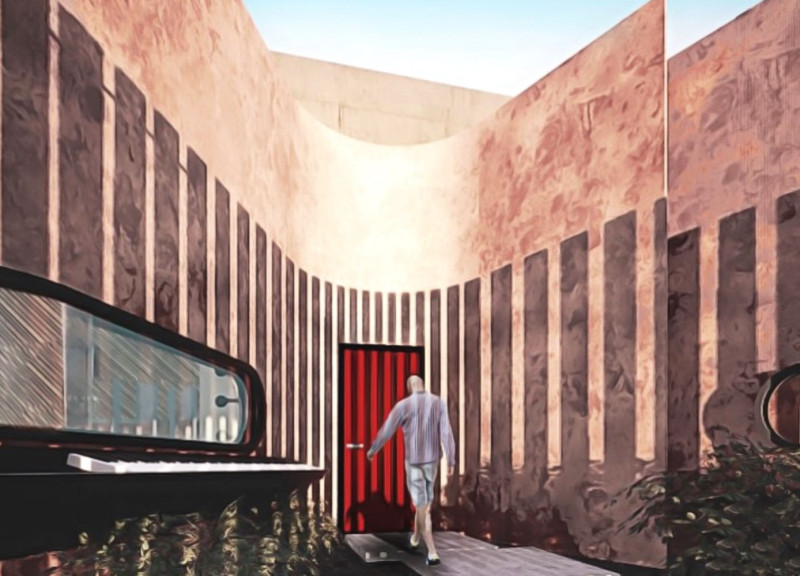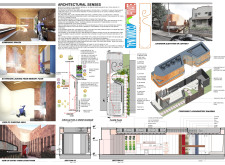5 key facts about this project
One of the defining characteristics of this architectural design is its undulating façade composed of corten steel. This material not only provides structural resilience but also develops a distinctive weathered aesthetic, allowing the building to adapt visually within its urban context. The design incorporates rooftop gardens that contribute to both ecological sustainability and the sensory experience of the residents, featuring edible plants such as lavender and mint. These elements support a lifestyle that connects inhabitants with nature and promotes sustainability within an urban framework.
The interior layout emphasizes openness and flexibility, with substantial communal areas adjacent to private bedrooms. This design approach allows for social interaction while ensuring personal privacy. Large windows throughout the building facilitate natural light and visual continuity with the outside world, significantly enhancing the livability of the spaces. The choice of materials such as memory foam in sleeping areas and wood finishes in communal spaces enriches texture and comfort, thereby addressing the sensory quality of the architecture.
Unique Features and Design Approaches
A key differentiator of "Architectural Senses" is its intentional focus on multi-sensory engagement through both spatial organization and material selection. The architecture is designed to evoke sensations related to touch, sight, sound, and smell, thereby deepening the relationship between the inhabitants and their environment. The integration of indoor plants and community gardens not only serves functional purposes but also transforms the atmosphere within the building, making nature a predominant feature of the living experience.
The architectural design navigates the challenge of urban density by carefully balancing communal and private elements. The circulation paths within the building are thoughtfully planned to encourage movement while providing visual landmarks and tactile references that guide residents through the space. This strategic layout enhances usability and promotes an active lifestyle, contributing to the overall mission of the project.
Sustainable Practices and Material Selection
The material palette of "Architectural Senses" plays a crucial role in both aesthetics and functionality. Corten steel, wood, concrete, glass, and other sustainable materials are selected for their durability, aesthetic qualities, and sensory properties. The exterior materials are designed to weather naturally, creating a unique visual identity that evolves with time. The use of natural textures and colors in the interior reinforces the project's commitment to enhancing human experience through design.
In summary, "Architectural Senses" sets a precedent for integrating architecture and sensory experience in a residential format. By focusing on community-building and sustainable principles, the project offers innovative solutions for modern living. To explore the project further, including architectural plans, sections, and designs, we invite readers to review the detailed presentation of "Architectural Senses" for additional insights into this thoughtfully executed architecture.























